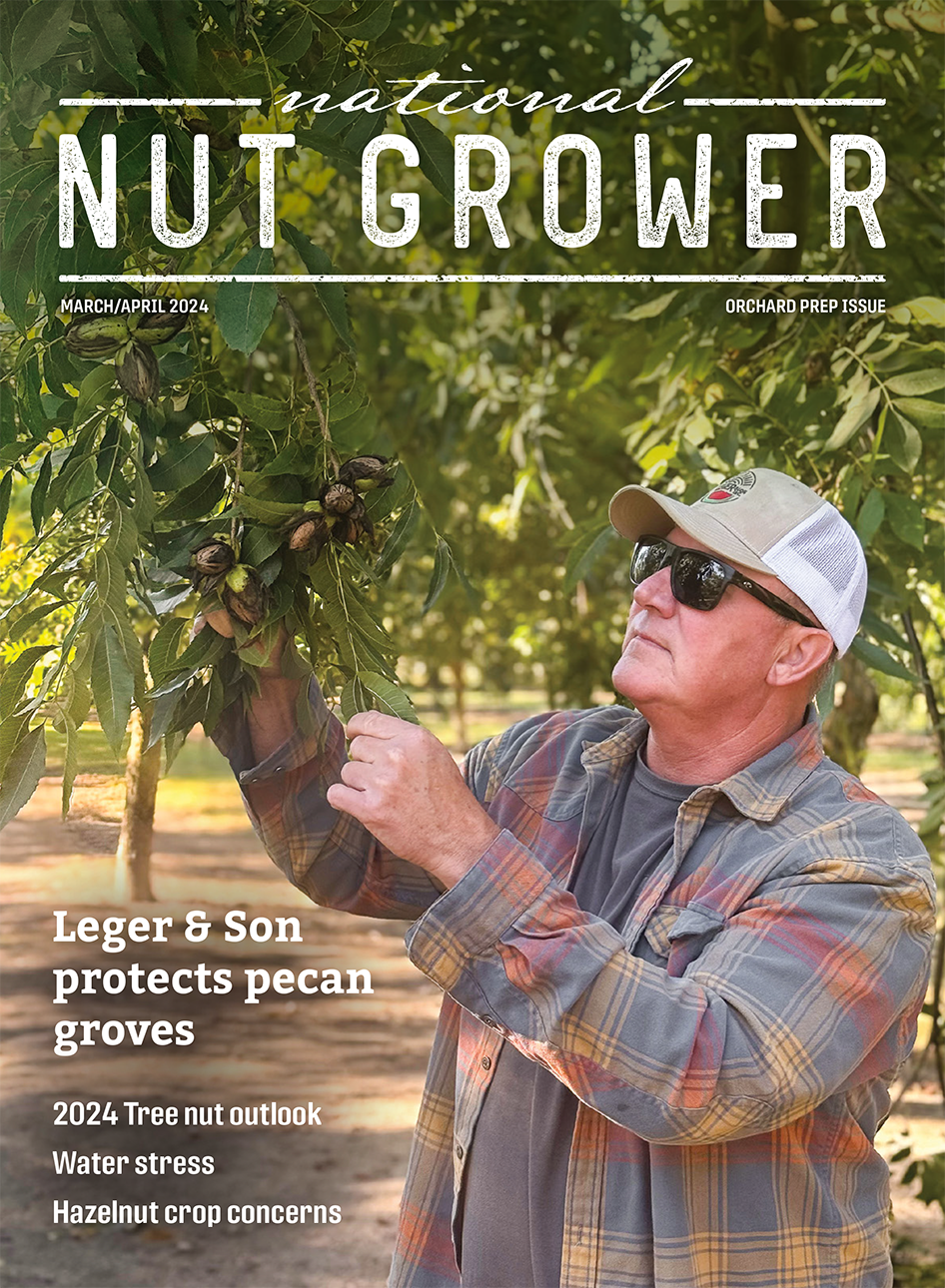
Mar 31, 2022Almond fertility: Planning following a frost
February of 2022 was not kind to almond growers, particularly in the Northern Sacramento Valley. Not only was the month historically dry, but the end of the month also produced minimum temperatures as low as 22° F in some areas for multiple hours.
Some regions of the Sacramento Valley experienced much more dramatic lows than others, with the Northern and Eastern portions of the Valley being the most severely affected. It will be important for almond growers to not only be patient regarding the assessment of their crop, but to also understand how to think ‘long-term’ when making fertility decisions throughout the rest of this year.
Estimating total crop loss in March should be done with great care. Almonds typically retain approximately 30-35% of their blooms, so a frost that significantly reduces the number of blooms on any given tree may not necessarily set fewer nuts.
The widespread frost of 2018, while it affected many areas differently, didn’t result in dramatic reductions in yield. In many cases, early thinning of the crop load results in much better sizing of the nuts, as well as a reduction in aborted nuts during June drop.
If growers over-estimate the crop reduction and reduce inputs accordingly, there is the potential for long-term consequences. Short-term thinking and knee jerk reactions of pulling back on fertility, particularly nitrogen and/or potassium, can result in poor performing crops in the years to come.
Nitrogen management
The goal is not to tell growers how much nitrogen fertilizer is needed, but instead provide direction regarding nitrogen management when crop load is uncertain. This will center around nitrogen and potassium management, as these nutrients are likely to tie up the majority of a grower’s budget. Table 1 below summarizes the University of California (UC) nitrogen recommendation concerning the seasonal timing of nitrogen applications. Because I don’t think most growers will have a firm understanding of what impact the February frost had on their overall yield until perhaps mid to late April, I would encourage growers to remain committed to their spring plan.

For example, let’s say before the frost a grower was planning to apply 250 lbs. of nitrogen throughout the whole season. I would still encourage this same grower to apply 125 lbs. before the end of April (20% in March, and 30% in April). Once we’re in April, a revised crop estimate can be completed. Once a revised crop estimate is completed, and we can determine with relative certainty a loss is expected, adjustments can then be made to the fertility plan.
In this example, if we then believe our yield loss will be 25%, our new full-season nitrogen plan will total approximately 188 lbs. Since 125 lbs. were already applied prior to May, 60 lbs. is the remaining balance of nitrogen still in the plan.
This remaining nitrogen is best applied prior to the first week of June due to risk of hull rot. The example described above should be used as a general strategy, and should be coupled with intensive tissue sampling from April through July. By tissue sampling these four months, we can understand nitrogen status of the orchard, while yield remains uncertain.
Nitrogen uptake is primarily driven via transpiration (mass flow), while most other nutrients rely on a balance between mass flow and diffusion as means of uptake. This means tissue sampling almond leaves once transpiration rates start to increase following leaf out is an effective way of evaluating nitrogen status. These tissue samples must be compared to proper monthly tissue analysis guidelines, as the values will steadily decrease. Once we’re able to take our summer tissue samples (~July), we can evaluate our nitrogen management throughout the season and develop a post-harvest plan.

In 2021, I compiled all the almond leaf tissue samples submitted through Wilbur-Ellis’ Total Nutrition System and found that only 7% of all tissue samples taken in the Sacramento and North San Joaquin Valleys were below 2.5%. The consensus from UC researchers is that almond orchards with leaf tissue levels greater than 2.5% can reduce, or, in some cases, omit post-harvest soil applications of nitrogen without suffering yield reduction the following year.
Growers can use the post-harvest period as an opportunity to reconcile their fertility program with final yield. If yield came in a bit higher than expected, perhaps a reduced post-harvest nitrogen application is warranted. If yield came in as expected or slightly lower than expected, a post-harvest foliar application of a high-quality nitrogen source could be considered as a cheaper fertilizer option.
Growers should work with their PCA regarding nitrogen management strategies for their specific operation.
Potassium management
Potassium is removed in very high amounts when compared to many other crops, with up to 90 lbs. of K2O being removed with 1,000 lbs. of crop.
This only tells part of the story because there are number of metabolic processes that are governed by potassium, including but not limited to carbohydrate/protein synthesis, sugar transportation via phloem transport, and stomatal regulation. For this reason, potassium uptake is quite steep and occurs early in the cropping process.
Potassium plays such an important role for the long-term health of permanent crops; this should be the last nutrient reduced from a grower’s fertility plan. As mentioned above, potassium plays a vital role in the manufacturing of carbohydrates, as well as the movement of carbohydrates throughout the tree via phloem transport. If growers neglect potassium and allow levels to drop, carbohydrate manufacturing can become impacted and can result in lower yields in future years.
Metabolic processes can be separated into ‘primary’ and ‘secondary’ metabolism categories based on priority. Processes like growth, development, and reproduction are considered primary metabolism and are prioritized by the tree. Secondary metabolic processes primarily include disease resistance and hormone signaling. When growers skimp on potassium applications, they can open themselves up to future disease and/or future yield reduction. For this reason, growers should prioritize both potassium management and nitrogen management to mitigate future risk.
I would encourage growers to forge ahead with their spring fertility program, which can always be adjusted as we get later into the season. Adjustments can be made to summer programs or even fall programs, but growers should be cautious about missing early uptake, as well as root flushes in the springtime. Consider omitting winter dry programs (SOP), and instead shift to more efficient and more soluble options for potassium throughout the growing season. Being flexible and patient as crops continue to develop will be important for growers to weather through the grim spring of 2022 and be well situated for future yield opportunities.
– Matt Comrey, technical nutrition agronomist, Wilbur-Ellis







